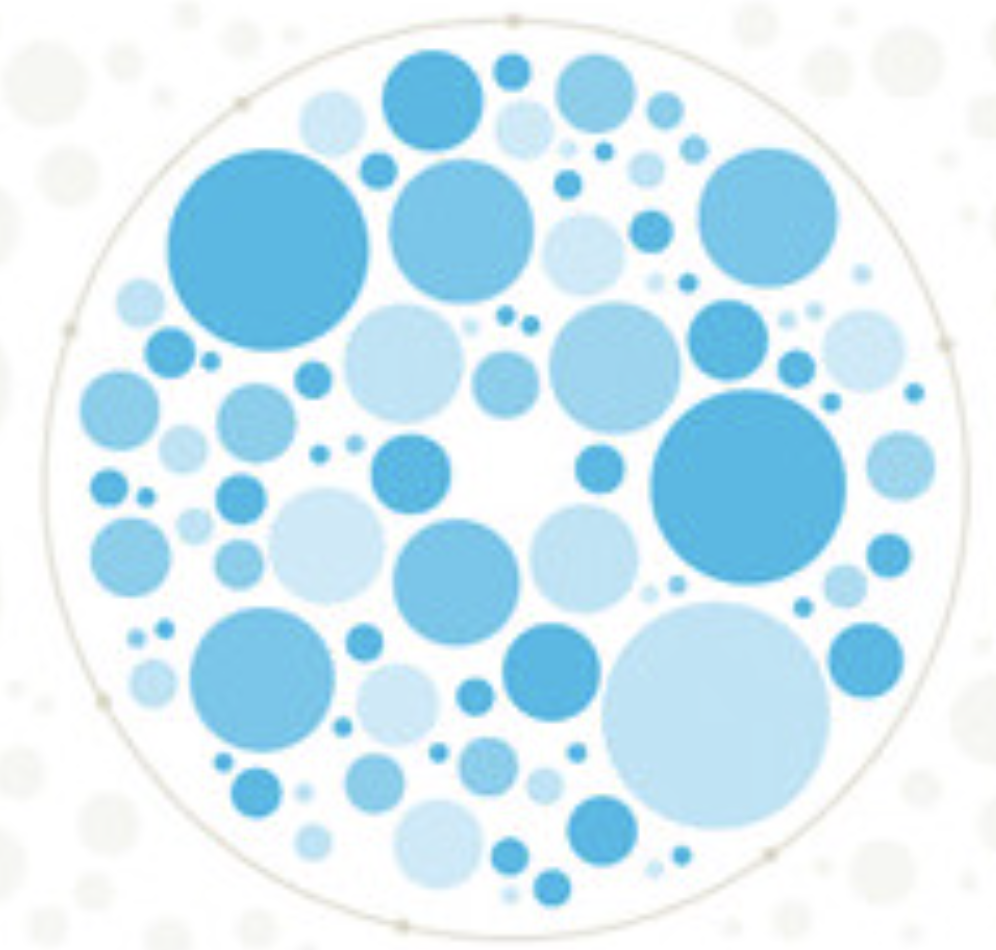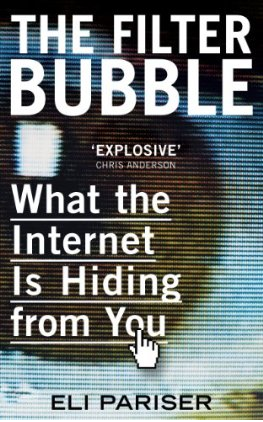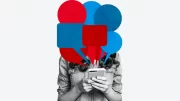Introduction
Navigating the digital landscape of the 21st century, users increasingly rely on search platforms as their primary compass, guiding them through the vast ocean of information. These platforms, from Google to Bing, promise to deliver the most relevant content to users, streamlining the information discovery process. However, beneath this convenience lies a complex web of algorithms that determine relevance and shape users’ perceptions of the world (Berman&Katona, 2020). These algorithms, designed to personalize and enhance user experience, inadvertently create what is known as “Filter Bubbles.” These bubbles, while seemingly benign, curate a user’s online experience based on their past behaviours, preferences, and even geographical location. The result? A tailored digital environment that continuously reinforces users’ existing beliefs and shields them from diverse viewpoints.

This phenomenon, while optimizing user engagement, poses a profound question: At what cost does this personalization come? As users are enveloped in these bubbles, the essence of the internet as a democratizing force for information is at stake. This blog delves into the rise and implications of filter bubbles in search platforms, exploring their impact on equitable access to information and the broader societal consequences.
Rising of Filter Bubbles

The concept of “Filter Bubbles” was popularized by internet activist Pariser (2011) in his book, “The Filter Bubble: What the Internet is Hiding from You.” Pariser posited that as search engines and social media platforms increasingly personalized user experiences, individuals were being isolated in their informational bubbles. These bubbles are algorithmically curated spaces where content is selectively presented based on a user’s past behaviours, preferences, and even social interactions. The underlying algorithms prioritize content that aligns with a user’s existing beliefs, interests, and search history, often sidelining diverse or contradictory information. This rise can be attributed to the commercial interests of tech companies aiming to increase user engagement and retention. Platforms promote longer browsing sessions and greater interactions by presenting users with material they are more likely to like or agree with.
However, this hyper-personalization comes at a cost. While users might feel more catered to, they are often unaware of the vast swathes of information they miss out on, leading to a narrowed and biased view of the world. This phenomenon has profound implications for democratic discourse, critical thinking, and societal polarization (Kitchens&Johnson&Gray, 2020).
Affection of the Filter Bubbles
1. Cognitive Implications:
At the individual level, filter bubbles can significantly shape cognition and decision-making. Continual exposure to similar content reinforces pre-existing beliefs, leading to a phenomenon known as confirmation bias (Jones-Jang&Chung, 2022). This means individuals become more inclined to accept information that aligns with their views and dismiss opposing perspectives. Over time, this can stifle critical thinking and make individuals more susceptible to misinformation.

Throughout 2021, as COVID-19 vaccines were being developed, approved, and distributed worldwide, a significant amount of vaccines misinformation began circulating online. On platforms like Facebook, Twitter, and even private messaging apps like WhatsApp, false claims about the vaccine’s side effects, ingredients, and long-term impacts proliferated. Some of these claims included notions that the vaccines contained microchips for tracking individuals. Individuals who were already sceptical or hesitant about vaccines found themselves in online echo chambers where such misinformation was continuously shared and reinforced, many chose not to get vaccinated. These filter bubbles, devoid of credible and scientific counter-narratives, amplified fears and hesitations about the vaccine.
2. Societal Polarization:
Filter bubbles can lead to societal fragmentation. By limiting exposure to diverse opinions, individuals become deeply rooted in their beliefs, leading to societal polarization, reduced empathy, and increased misunderstandings. Jones-Jang and Chung(2022) highlighted the dangers of such divisions, pointing out that polarized societies struggle to engage in constructive dialogue.

The 2021 climate change debate serves as a case in point. Despite a broad scientific consensus on human-induced climate change, global discussions on the topic remained sharply divided. While most scientists agree that human activities, especially burning fossil fuels, are the primary cause, a significant global segment remains skeptical or denies this. Social media platforms, driven by algorithms, exacerbate this divide. Platforms like Facebook, YouTube, and Twitter often amplify content that elicits strong reactions, intensifying extreme views. For instance, those concerned about climate change might be inundated with dire predictions, occasionally overstating immediate risks. Such filter bubbles reinforce beliefs, limit exposure to opposing views, and strengthen confirmation bias.
3.Threat to Democratic Processes
Democracies depend on well-informed citizens making decisions based on a thorough understanding of issues. However, filter bubbles, where individuals are exposed mainly to information that aligns with their beliefs, challenge this principle. When trapped in these bubbles, voters may make choices based on limited or skewed information (Kitchens&Johnson& Gray,2020). This can result in the election of representatives who cater more to specific groups than the broader electorate.

The 2018 Brazilian presidential election exemplifies the challenges filter bubbles present to democratic processes. This highly polarized election saw Jair Bolsonaro’s victory, with social media, especially WhatsApp, playing a pivotal role in shaping opinions. Political factions utilized WhatsApp to disseminate tailored messages to specific groups. Given the platform’s private nature, these messages, whether genuine or misinformation, spread without much public oversight. Many Brazilians, being part of various WhatsApp groups, found themselves in echo chambers, receiving repetitive messages favoring a particular narrative or candidate. Biases were exacerbated by the lack of refutation or fact-checking inside these organisations. This election serves as a reminder of the risks that filter bubbles pose to democratic outcomes as well as the significance of transparency, media literacy, and fair dialogue in the modern digital age.
Counterarguments and Reconciliation
Cross-cutting content refers to information or viewpoints that diverge from an individual’s pre-existing beliefs or preferences. Cross-cutting content showcases that online platforms, despite their personalized algorithms, inherently possess a diversity of information(Interian, Marzo, Mendoza & Ribeiro,2023). In the context of online platforms, it represents the diverse pieces of information that users encounter, even within their personalized environments. This content acts as a bridge, offering users a glimpse into perspectives, news, or ideas they might not actively seek out. The significance of cross-cutting content lies in its potential to break the homogeneity of filter bubbles. By exposing users to varied viewpoints, it challenges preconceived notions, stimulates critical thinking, and fosters a more informed and holistic understanding of issues.

One of the world’s largest social media platforms Facebook, introduced a feature known as “Trending Topics” that showcased popular news stories and discussions from across the platform. While the content a user might see on their newsfeed is influenced by their likes, shares, and network, “Trending Topics” provided a broader view of what was being discussed on Facebook, irrespective of individual user preferences. During the U.S. Presidential Elections, a user who predominantly engaged with liberal content might still see trending discussions or news from conservative sources and vice versa. This feature, thus, served as a window to cross-cutting content, allowing users to see what was resonating across the platform, even if it diverged from their typical content. Such features underscore the potential of digital platforms to introduce diversity in content consumption, challenging the notion that users are entirely trapped within their filter bubbles.
Conclusion
In an era where digital platforms dominate our information consumption, understanding the implications of filter bubbles is paramount. While they offer a tailored experience, the potential pitfalls from cognitive biases to societal polarization cannot be ignored. As we navigate this digital era, it’s crucial to strike a balance and acknowledge the challenges posed by personalized algorithms while also recognizing the potential of the internet to foster informed, critical, and cohesive societies. It is up to users to interact critically and digital platforms to adapt to keep the internet a dynamic marketplace for ideas.
References:
Berman, R., & Katona, Z. (2020). Curation Algorithms and Filter Bubbles in Social Networks. Marketing Science (Providence, R.I), 39(2), 296-316.
https://doi.org/10.1287/mksc.2019.1208
Differences Emerge over Appropriate Forum for Discussing Climate Change, as Delegates Hold Debate on Links between Global Crisis, Security. (2021, September 23). United Nations. https://press.un.org/en/2021/sc14644.doc.htm
Grimes, D. R. (2017, December 4). Echo chambers are dangerous – we must try to break free of our online bubbles. The Guardian. https://www.theguardian.com/science/blog/2017/dec/04/echo-chambers-are-dangerous-we-must-try-to-break-free-of-our-online-bubbles
Interian, R., G. Marzo, R., Mendoza, I., & Ribeiro, C. C. (2023). Network polarization, filter bubbles, and echo chambers: an annotated review of measures and reduction methods. International Transactions in Operational Research, 30(6), 3122–3158. https://doi.org/10.1111/itor.13224
Jones-Jang, S. M., & Chung, M. (2022). Can we blame social media for polarization? Counter-evidence against filter bubble claims during the COVID-19 pandemic. New Media & Society, 146144482210995–.
https://doi.org/10.1177/14614448221099591
Kitchens, B., Johnson, S. L., & Gray, P. (2020). Understanding Echo Chambers and Filter Bubbles: The Impact of Social Media on Diversification and Partisan Shifts in News Consumption. MIS Quarterly, 44(4), 1619–1649. https://doi.org/10.25300/MISQ/2020/16371
Lunardi, G. M., Machado, G. M., Maran, V., & de Oliveira, J. P. M. (2020). A metric for Filter Bubble measurement in recommender algorithms considering the news domain. Applied Soft Computing, 97, 106771–. https://doi.org/10.1016/j.asoc.2020.106771
Osofsky, J. (2016, May 12). Information about trending topics. Meta. https://about.fb.com/news/2016/05/information-about-trending-topics/
Pariser, E. (2011). The filter bubble : what the Internet is hiding from you. Viking.
Sunderji, A. (2021, March 6). How vaccine misinformation spreads on social media. The varsity.https://thevarsity.ca/2021/03/06/how-vaccine-misinformation-spreads-on-social-media
Image and Video:
- “Filter Bubble” by cambodia4kidsorg is licensed under CC BY 2.0.
- “The Filter Bubble” by topgold is licensed under CC BY 2.0.
- GCFLearnFree. (2018, November 20). How Filter Bubbles Isolate You. [Video]. Youtube. https://www.youtube.com/watch?v=pT-k1kDIRnw
- “Prime Minister Boris Johnson visits a Covid-19 Vaccine Visit” by UK Prime Minister is licensed under CC BY 2.0.
- “Climate Change ‘co2’ ideas” by allispossible.org.uk is licensed under CC BY 2.0.
- “Rodrigo Sá Brazil Brasil Brazilian Music Brasileiro Braza Brazuca Brasilidade Flag Sky Blue Bandeira Brasileira” by Rodrigo Sá is licensed under CC BY 2.0.
- “Facebook” by chriscorneschi is licensed under CC BY-SA 2.0.
Harmful Biases in Search Platforms: Why do Filter Bubbles pose a threat to equitable access to information. by Tingxuan Zhao is licensed under CC BY-NC-ND 4.0

